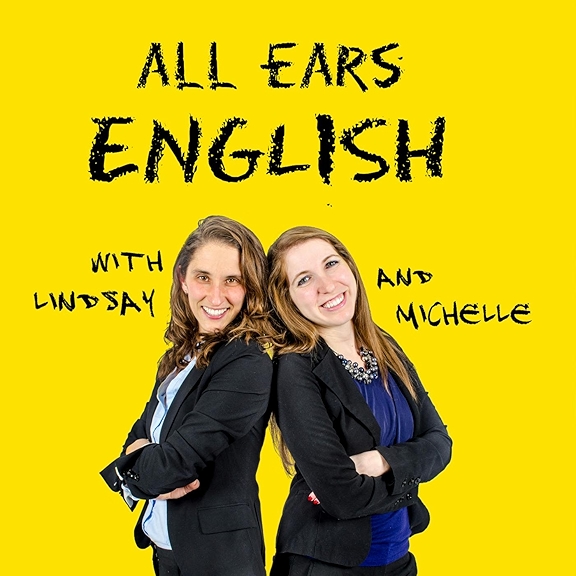
Making, recording, and evaluating predictions is a simple way to improve your thinking and decision-making. But the way to properly make and record predictions isn’t obvious. In this article, I’ll share some predictions I’ve made, what I’ve learned, and how you can improve your thinking by making predictions.
Making predictions has grown my business
Five years ago, I had been running my business for ten years, and it wasn’t going great. Then, I started publishing monthly income reports, and along the way, making predictions. My income has nearly doubled, and I attribute much of that success to my habit of making predictions.
I began by predicting how much money I’d make in a product launch, and grew to predicting how much traffic articles I had written would gain, and how many copies books I’d written would sell. I now routinely make predictions for things as seemingly mundane as whether I’ll enjoy a conference, whether I’ll still be publishing on TikTok a year from now, or whether an avocado is ripe.
On the surface, making predictions seems like a pointless game. This is, indeed, true of making predictions the wrong way. But making predictions the right way helps you deal with uncertainty you otherwise have no hope of handling.
Predictions help you bet your life, better
Each of us has limited resources, such as time, money, and mental energy. We’re constantly making decisions about how to use these resources, and when we make those decisions, we are expecting outcomes.
- If we go on this date, will we find the love of our life, or wish we’d stayed in?
- If we write this book, will we achieve fame and fortune, or feel as if we’ve wasted years of our life?
- If we spend an hour on social media, will we make valuable connections, or spiral into self-hatred over our lack of discipline?
As Annie Duke, author of Thinking in Bets wrote:
In most of our decisions, we are not betting against another person. Rather, we are betting against all the future versions of ourselves that we are not choosing. —Annie Duke, Thinking in Bets
Each decision we make is a bet. We bet a resource, and expect something in return. Most of us don’t recognize or express the expectations of our bets. But we should.
Some bets are clearer than others
If you bet a dollar on a coin flip and only win $1.50 for guessing correctly, you’d easily recognize that as an unfair bet: There’s a 50% chance of guessing correctly, so you clearly should receive two dollars. But the more variable the odds, and the more vague your wager and winnings, the more difficult it becomes to think clearly.
What’s the value of finding the love of your life? What other benefits can you get writing a book besides fame and fortune? What are the chances that during this hour of social media you’ll make a life-changing discovery? Making objective decisions taking into account all these variables becomes so complicated you might as well throw up your hands, surrender to randomness, and do what feels right in the moment.
And that’s what most of us do. Case in point: The multi-billion-dollar gambling industry, propped up by people doing what feels right in the moment – their decision-making shrouded by the smokescreen of ever more complex and variable bets.
The key to making predictions in a way that helps you evaluate your decisions is to avoid what Annie Duke calls “resulting.” If you wager a dollar on a coin flip, with a chance to win $10, and lose, the result of your decision was bad, but your decision was good. The odds were clearly in your favor. Mathematically, you were sure you’d win that bet one of two times. If you had won, you were going to win ten times your money.
Now how do you apply this thinking to more complex and vague situations, such as a product launch, your Saturday night plans, or whether or not your new hobby is a passing obsession? The key is to make a prediction, the right way.
How to make predictions the right way
There are two components to making predictions the right way.
- Turn it into a coin flip.
- Identify the odds.
1. Turn the outcome into a “coin flip”
First, turn the prediction into a coin flip. I don’t mean in terms of odds, but in terms of result. When you flip a coin, it comes up heads or tails. When you make a prediction about a result, that result must either happen or not. For a prediction to be useful, it has to be falsifiable.
This is not easy to do, which is why few of us make predictions the right way, if at all.
- If you think it’s going to rain, in what area will it rain, by what time? Does a single raindrop count?
- If you think you’ll still be doing bird photography in six months, how many bird photos will you have taken, within the previous month?
- If you think you’ll enjoy going to the party, how many good memories will you be able to recall a week later?
You can define a successful result in whatever measurable way you want. The important thing is that to make a prediction, you need to turn the result into a coin flip. Not in terms of odds, but in terms of how you define the result.
Some actual predictions I’ve turned into coin flips:
- My Black Friday promotion will earn $3,000–$6,000.
- My blog post on Zettelkasten will average worse than a ranking of 10 for the keyword “zettelkasten”, the first three months after publish, according to Google Console.
- I will sell 5,000–15,000 copies of Mind Management, Not Time Management within the first year.
With each of these predictions, I was wagering resources. It took, time, money, and energy to run a promotion, write a blog post, and write a book. But what did I expect from those investments? I could have done any of these without making a prediction. Besides the long-term benefits of making these predictions – which I’ll get to in a bit – turning these predictions into coin flips had immediate benefits.
Turning predictions into coin flips helps answer these questions:
- Is this worth doing? By defining a successful result, you’re forced to ask yourself if it’s worth the investment, based upon your expectations.
- How will I achieve this? In the process of defining a successful result, you start thinking about why you expect to achieve that result. Do you have prior experiences or past data to draw upon? You’ll never search as hard for these as when you’re making a prediction.
- Can I do better? Defining a successful result has a symbiotic relationship with the effort you put forth trying to achieve the result. Making the prediction motivates you to try to make that prediction correct, which sometimes motivates you to predict and try to achieve an even better result.
When you flip a coin, you of course aren’t sure whether it will come up heads or tails, and when you make a prediction, you aren’t sure whether you’ll achieve that result. And that is how it should be.
2. Identify the odds
The second way to make a prediction the right way is to identify the odds of achieving that result. You’ve turned the prediction into a coin flip, but it’s not necessarily a coin flip with 50/50 odds. It may be more like a die roll, with 1:6 odds, or a roll of four or lower, with 2:3 odds.
If you’ve turned your predicted result into a coin flip by adjusting a range, you can adjust that range according to your expected odds. In this way, if you want to literally turn your prediction into a coin flip, you can pick a range you feel you have 50/50 odds of achieving. For example, I believed I had 50/50 odds of making $3,000–$6,000 on my Black Friday promotion, and of selling 5,000–15,000 copies of my book in the first year. I specifically chose those ranges based upon what I expected to have 50/50 odds of achieving.
If your prediction doesn’t involve a range, such as whether or not you will regret going to a party, then you simply have to identify your expected odds of that result. For all odds, I think it’s easiest to choose a percentage of confidence, such as 50% for 50/50 odds, or 66% for 2:3 odds. For example, I was 70% sure I wouldn’t regret attending a conference in Vegas last year.
Each of these predictions is for one event. But the result will either be achieved, or not. Therefore, what you felt 70% sure would happen will in retrospect look as if it had 0 or 100% odds of happening. So what is the point of choosing odds for your prediction?
There are three benefits of choosing odds:
- It helps you gain clarity on each decision.
- It helps you distinguish risky from not-risky decisions.
- It helps you rate and improve your decision-making, over time.
Choosing odds helps you gain clarity
First, choosing odds of achieving a result helps you gain clarity on a decision. Let’s say you buy your first guitar. Surely you’re picturing yourself being a pretty good guitar player someday. But how do you define that, how sure are you you’ll become a good guitar player, and how soon? A year later, when your guitar is collecting dust in your closet, you might feel pretty bad about yourself.
But suppose that when you bought your guitar you had predicted that you were 50% sure, one year later, you would have practiced guitar at least fifteen minutes in the previous month? Based upon that prediction, it turns out you weren’t so sure to begin with that you’d become a good guitar player.
Choosing odds helps you distinguish sure bets from wildcards
Which brings us to the second benefit of choosing odds, which is that it helps you distinguish risky decisions from not-risky decisions. You took a chance buying a guitar, and it didn’t work out. That’s easier to live with if you know you were taking a chance.
Some of life and business’s greatest benefits come from taking chances. But you only have so many resources to gamble with. Professional poker players know they need a certain “bank roll” to stay in the game and keep making bets. If they have a lot of bank roll, they might play a riskier bet than if they have little. They’re able to do that because they know the odds.
In business, especially creative business, your “sure bets” keep you in business, while “wildcards” can change your business. As you decide how to invest your resources, and evaluate whether you’ve achieved successful results, you’ll make better decisions if you know ahead of time whether you’re playing a sure bet or a wildcard.
For example, I was 95% sure my Zettelkasten blog post wouldn’t rank in the top ten for the search term, so I was clear going into it I was playing a wildcard. Additionally, while I was 50% sure I’d sell 5,000–15,000 copies of my book in the first year, I was 90% sure I’d sell fewer than 250,000 copies, which helped put a ceiling on my expectations.
Choosing odds improves your decision-making
Which is the third benefit of choosing odds: improving your decision-making over time. If you had been 90% sure you’d’ve practiced guitar ten hours in a month, you’d still feel bad when it turned out you didn’t, but at least you’d have data to learn from. Without that data, you might say to yourself, “I never finish what I start. I’m a loser.” With that data, you can say, “I overestimated my enthusiasm to play guitar. I’ll keep that mistake in mind in the future.”
Notice you wouldn’t tell yourself you were “wrong.” Because you weren’t. Even if you were 90% sure you’d’ve practiced guitar ten hours in a month and didn’t, you’d only end up 90% wrong. Which means you were 10% right. When you choose odds of your expected results, it’s easier to learn from your mistakes because you’re never totally wrong, and always a little right – which makes your mistakes sting a little less.
But to get enough data to know how good your predictions are, you need to make a lot of predictions over time. If you don’t know the odds of a coin flip, and your prediction turns out wrong, you don’t learn a whole lot. But if you make a hundred predictions, you’ll end up with a pretty good idea of the odds of that coin flip.
Make many predictions with the same odds, for faster calibration
The more predictions you make with the same odds, the more quickly you can tell how good your predictions are. I’ve presented to you examples of predictions I’ve made with various odds. But whenever possible, I try to choose “coin flips” I believe have a 70% chance of being correct.
70% is an arbitrary level of confidence. What’s important is that by making many predictions of which I have 70% confidence, I learn how accurate my predictions tend to be at that confidence level.
I’ve made 19 predictions at 70% confidence. Only 63% of those have turned out correct. By making and tracking many predictions, I’ve learned that when I’m 70% confident something will happen, it will generally happen only 63% of the time. I’m slightly overconfident at that range, and so should be more conservative with my future predictions.
My prediction track-record
I keep track of and publicly display many of my predictions on PredictionBook.com, which is one of those totally free websites with no ads that makes you nostalgic for 2007. Because I’ve made more than fifty predictions, I can see how good I am at predicting at various levels.
For example, after fifteen predictions at 90% confidence, 80% have turned out correct. After five at 50% confidence, and five at 60% confidence, those have turned out correct 80% and 100% of the time, respectively. While I should to be more pessimistic about things I’m pretty sure will happen, it seems I should be more optimistic about things I’m not so sure will happen.
It turned out the prediction that my Black Friday promotion would earn between $3,000 and $6,000 was correct. Since I was 50% confident, I was half-right, and half-wrong. I did sell between 5,000 and 15,000 copies of my book in the first year. Again, half-right, half-wrong. And the Zettelkasten blog post I was 95% sure wouldn’t rank in the top ten, actually did! I was happy to be 95% wrong about that – it was a wildcard that turned out.
Making predictions feels unnatural – which is why you do it
The next time you’re choosing whether something is worth doing, I highly recommend you make a prediction. If turning the outcome into a coin-flip and picking a percentage of confidence feels uncomfortable to you – it should. Thinking in this way doesn’t come naturally – which is why it’s a superpower.
Image: Ghost of a Genius, by Paul Klee
About Your Host, David Kadavy
David Kadavy is author of Mind Management, Not Time Management, The Heart to Start and Design for Hackers. Through the Love Your Work podcast, his Love Mondays newsletter, and self-publishing coaching David helps you make it as a creative.
Follow David on:
Subscribe to Love Your Work
Support the show on Patreon
Put your money where your mind is. Patreon lets you support independent creators like me. Support now on Patreon »
Show notes: https://kadavy.net/blog/posts/make-predictions/




















